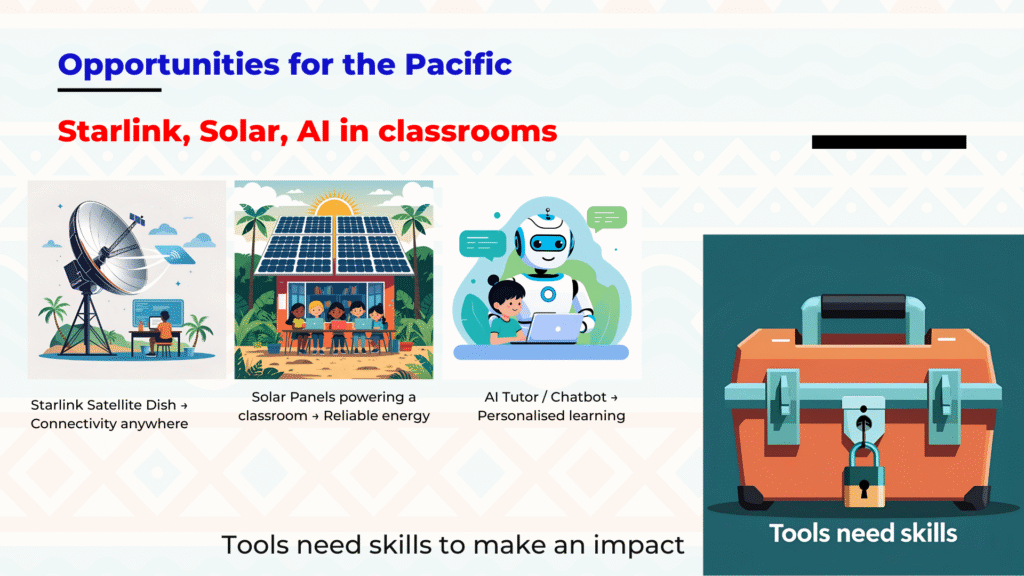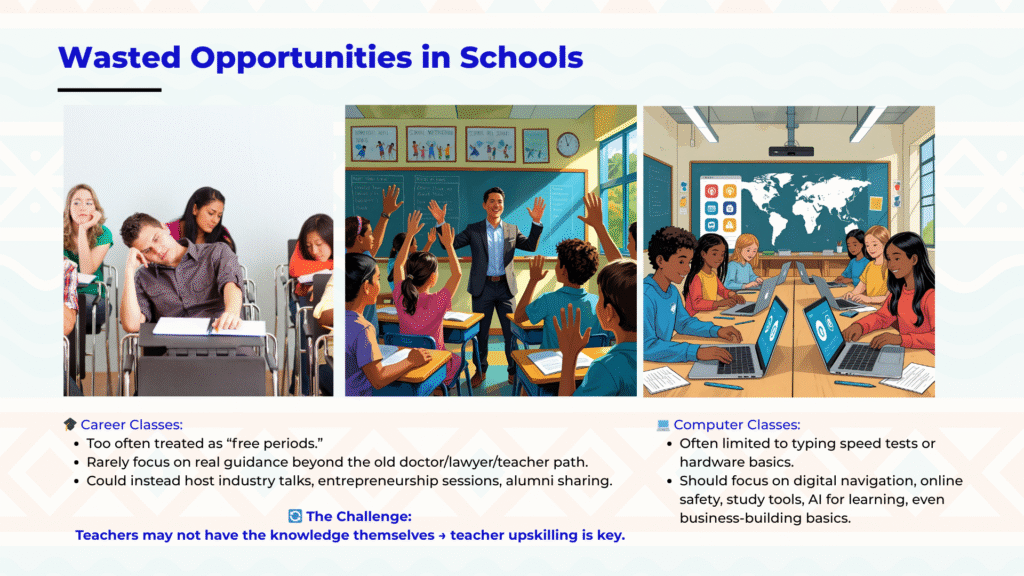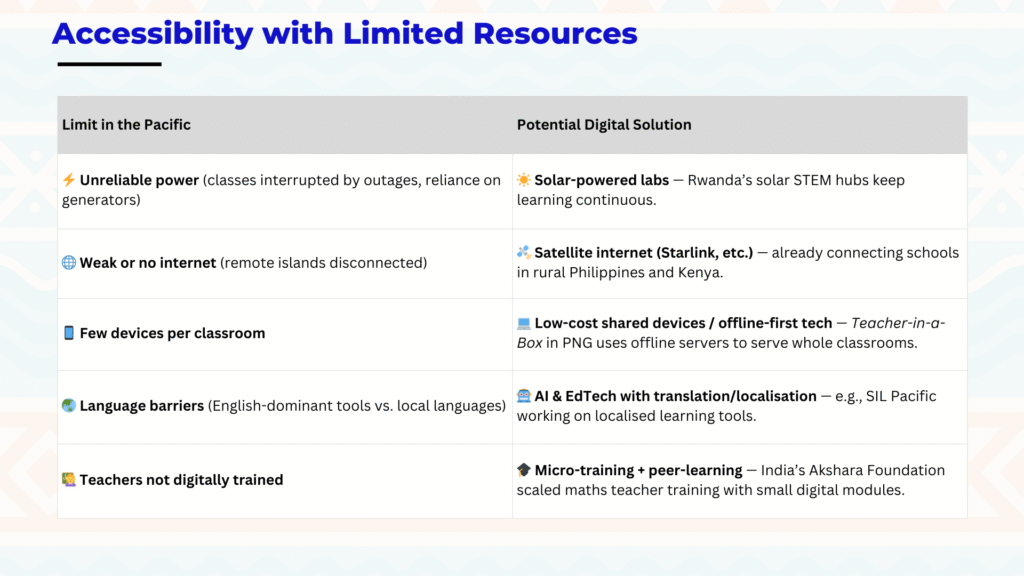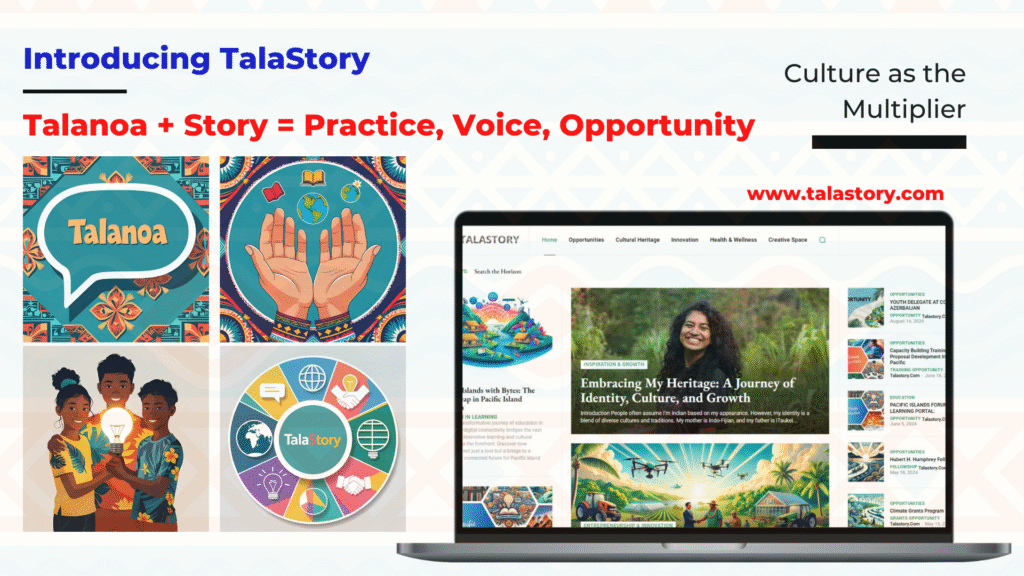Opportunities, Challenges, and the Role of Digital Transformation
Track: Accessibility with Limited Resources
Bula Vinaka everyone, I’m Akshay Deo.
I bring my experience from working across the Pacific in educational technology, developing tools and systems that support regional learning assessments and digital initiatives.
Over the years, I’ve had the privilege to work with ministries, schools, and regional bodies, and to see firsthand what’s working, where we’re struggling, and where we can innovate.
Today, I want to have a conversation about how we can make STEM education in the Pacific more accessible. Even in places where resources are limited.
I’ll share some personal observations and ideas that might spark new discussions, and examples from around the world that we can adapt to our unique Pacific context.

When we talk about STEM access in the Pacific, we have to start with the reality: we are a region of scattered islands, vast distances, and diverse cultures but also of uneven infrastructure.
Yes, mobile phone usage is high and in some pacific countries over 80% penetration but digital literacy is a different story. I’ve met students who are active on social media but struggle to fill out a basic online form. I’ve seen teachers trying to deliver lessons while juggling connectivity issues and a lack of devices.
In some islands, assessments are conducted in the local language, which makes sense culturally, but creates a challenge when we shift to online platforms that are mostly in English. Even in Fiji, which is ahead in some aspects, digital skills gaps remain and this is where I believe we need to focus our energy.

Today, AI tools can draft essays, visualise data, and translate documents instantly. But without strong digital literacy, these tools are like giving someone a car without teaching them how to drive.
If we want our youth to not only consume technology but also create with it, they need to understand it deeply. And that means embedding digital skills in STEM education from the earliest years and not waiting until university.

There are great efforts already happening in our region from teacher training to STEM curriculum development to regional literacy and numeracy assessments. We have seen pilot programs with digital tools in classrooms, and some exciting initiatives led by NGOs and universities.
But one thing I haven’t come across is a recent, comprehensive digital literacy survey for both students and teachers across the Pacific. If we knew exactly where the gaps are, from Year 1 to Year 13, we could design targeted interventions instead of guessing.
We could say: ‘In this country, Year 8 students are strong in communication tools but weak in online research’ and respond accordingly.

Around the world, countries are embedding STEM into everyday life. In Singapore, primary school students use maker labs for hands-on science and engineering. In Kenya and India, hackathons are solving community problems in just 48 hours. In Rwanda, solar-powered STEM hubs provide internet and tools in rural areas.
The key takeaway for the Pacific? We don’t have to reinvent the wheel but we do need to adapt these ideas to our realities: limited resources, language diversity, and the need for solutions that work offline or with low bandwidth.

Two technologies excite me for the Pacific right now:
First is Starlink. In remote areas where internet has been unreliable for decades, suddenly we have the possibility of high-speed, low-latency connectivity. Yes, regulatory challenges exist, but the potential is huge. not just for STEM learning but for teacher training, health services, and disaster response.
Second is solar power. I’ve been to places where the lights go out mid-class because the generator ran out of fuel. A basic solar setup can keep a small lab running for hours and combined with Starlink, you’ve just solved two of the biggest barriers: power and connectivity.
And then there’s AI. Yes, it’s a buzzword — but when used well, AI can give personalised tutoring, help with lesson planning, or translate materials into local languages But again, these tools are only as useful as the digital skills of the people using them.

In my travels and projects, I’ve noticed three patterns:
- We’re quick to adopt social media, slow to adopt digital learning tools.
- Computer skills are still treated as optional and not as core literacy alongside reading and maths.
- STEM programs often stop at theory, missing the link to entrepreneurship or real-world application.
What if we assessed digital literacy alongside reading and numeracy every year?
What if every STEM project included an entrepreneurship component?
If we start building that mindset early: ‘I can solve problems and create solutions’. We’re setting up our youth not just to get jobs, but to create them.

One thing I’ve noticed, is how much potential is wasted in supplementary classes.
Take career classes for example. When I was in school, career class was basically a free period. And even today, in many schools, it’s treated the same way. Students doing their own thing, teachers catching up on work. But this is such a missed opportunity. Imagine if instead, career classes brought in industry leaders, entrepreneurs, or alumni to share their stories. Imagine exposing students to the real opportunities out there — beyond the old mindset of doctor, lawyer, teacher as the only ‘top’ choices.” we could match students with mentors based on interest (science, coding, art + tech, entrepreneurship, etc.)
Then there are computer classes. I still remember my computer class and the highlight was trying to beat each other’s typing speed. There was no real learning about navigating online, no digital safety, no exploring tools that could help us study or even build businesses. And honestly, this hasn’t changed enough in many schools.
These classes could be powerful, showing students how to use technology to learn better, to innovate, to connect. But instead, they’re often wasted.
Of course, part of the challenge is that teachers themselves may not have the training or confidence in these areas. Which is why teacher upskilling has to go hand in hand with student learning.

Gamefied & Interactive STEM for the Pacific
We need engaging resources. Not just textbooks moved onto screens, but tools that actually gamify STEM. Interactive content, videos, quizzes, even simple game-based challenges that reflect our Pacific realities.
In New Zealand, for example, the STEM Online platform combines animations, experiments, and interactive lessons into one digital resource. Why not build something similar here in the Pacific — a platform built around our stories, our context, our languages?
To give you a sense of what’s possible, the video on this slide took me just 30 minutes to create with the help of AI. It’s a simple simulation: a planting game where students make choices and immediately see how those affect plant growth. Too much water? The plant wilts. Too little sun? Growth stalls. It’s a fun way to teach balance in ecosystems and decision-making but also shows how accessible gamified learning can be if we start experimenting with these tools.

At CRESPIRE, one of our recent projects is TalaStory — inspired by the Pacific tradition of talanoa.
It’s a platform for storytelling and idea-sharing where Pacific youth can see opportunities, showcase their innovations, share challenges they’ve overcome, and learn from each other’s journeys.
I believe stories are powerful in STEM because they make the abstract real. A student might forget a definition, but they’ll remember the story of someone like them who built a solution that worked.

I’m here to spark a conversation. Let’s consider a regional digital literacy survey for students and teachers, Year 1 to Year 13. Let’s share success stories across borders so no one has to start from zero. And let’s remember that in the Pacific, innovation is not about the latest gadget, it’s about what works in our context, with our resources, for our people.
Vinaka vakalevu!

